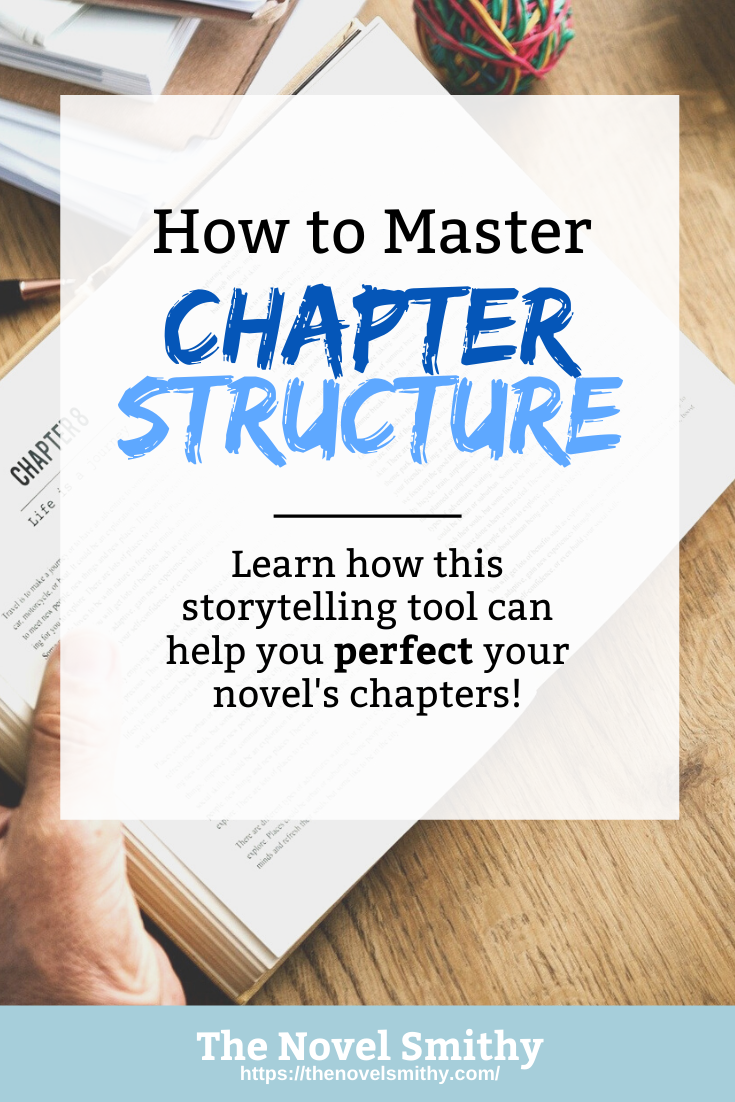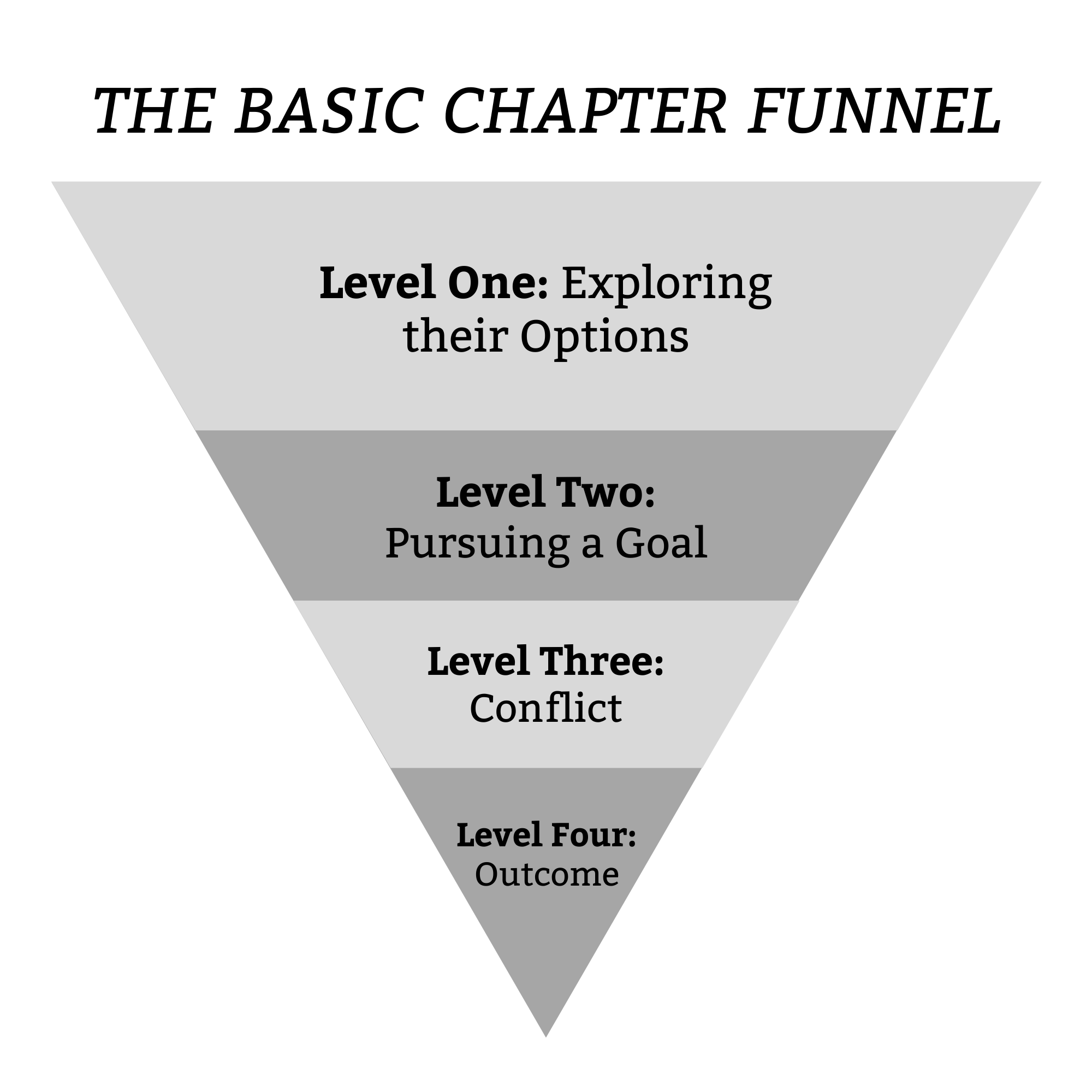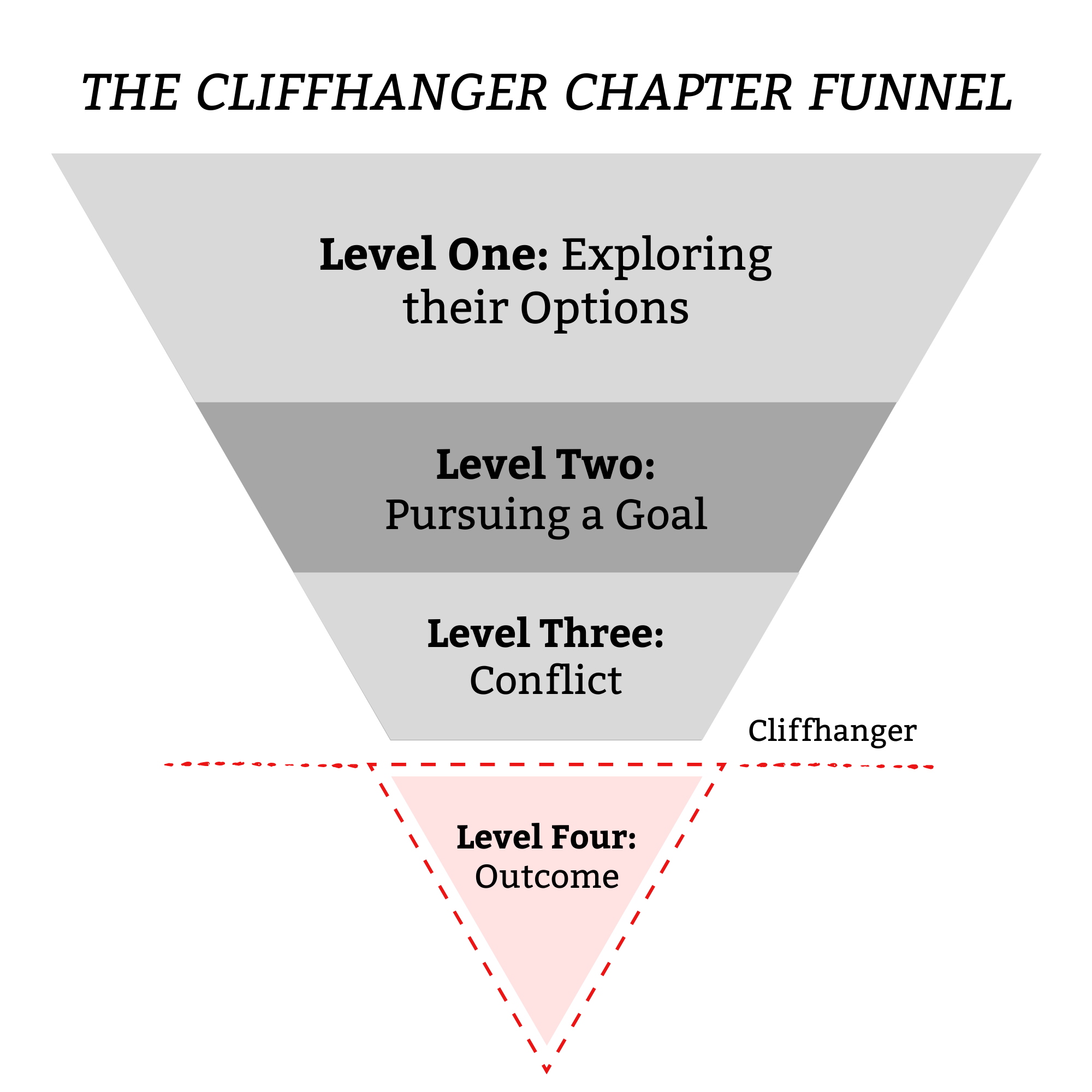Chapter Structure: How to Write the Perfect Chapter
Chapters are something most readers overlook…
However, that’s not actually a bad thing. When done well, chapters should fade quietly into the background, subtly shaping your reader’s experience without ever being intrusive. On the other hand, when done poorly, chapter breaks can grind your novel to a halt, derailing any bit of tension your story might have had.
So, how do you create the perfect chapter? Well, the answer is a lot like many other elements of storytelling—through story structure. Specifically, by using chapter structure!
The Real Purpose of Chapters
Contents
 Before we talk about anything else, let me get something out of the way…
Before we talk about anything else, let me get something out of the way…
Chapters are not the same as scenes.
This is a common misconception, and it’s one we need to do away with before we even begin discussing chapter structure. In fact, if you only remember one thing from this article, remember this—chapters can include anywhere from one to multiple scenes, so long as those scenes have some kind of logical connection.
If you’re unfamiliar with how scenes work, I recommend reading up on scene structure here.
Now, with that out of the way, what’s the real purpose of chapters?
Well, chapters are actually less about your story itself, and more about your reader’s experience. Chapters play a huge role in the pacing of your novel, but they also ensure your reader has natural pause points throughout your story, as well as a better idea of what’s important to your overall narrative.
When done well chapters are almost unnoticeable, but they still have a big influence on your finished novel. This brings us to the main question of this article—how do you create this kind of subtle, yet still effective chapter?
What is Chapter Structure?
When it comes to creating compelling chapters, the name of the game is chapter structure.
Overall, chapter structure is pretty similar to other forms of story structure, in that it acts as a loose guide for how to create chapters. However, for chapter structure specifically, this guide is less about shaping your story itself, and more about helping you organize that story for your readers. Again, chapter structure is all about shaping your readers’ experience.
This means that a well-structured chapter should fulfill a few requirements. It should:
- Help your reader keep track of the events of your story.
- Provide natural pausing points for your reader to leave and return to.
- Create a sense of suspense and urgency in your reader.
- And maintain a solid pacing that keeps your reader moving forward.
All of these help your reader engage with your novel in a more enjoyable, satisfying way.
Of course, chapter structure needs to be done well to be effective, and there are a variety of different chapter structures you could use. However, for the sake of this article, we’re going to focus on one specific type of chapter structure—chapter funnels.
Creating a Chapter Funnel:
I originally learned about chapter funnels—and chapter structure itself—years ago, after reading Libbie Hawker’s Take Off Your Pants.
“Think about it: first you have your character—a broad idea, and the character might go off in any direction. But next, he realizes that he wants something. He picks his direction. Something stands in his way, and the walls of the triangle begin to narrow. He struggles for what he wants, and the squeeze grows tighter. And finally, he either succeeds or fails—you reach the point of the triangle.
Every single chapter in your book must have this same pattern.” – Libbie Hawker
This book has a lot of excellent information, and I highly recommend reading it, but the thing that stood out to me the most was this description of chapters. The more I thought about it, the more I realized Hawker was right! The best chapters are the ones that create this strong sense of forward momentum. Better yet, this can all be visualized through chapter funnels.

Specifically, you can think of this chapter funnel in terms of four levels.
Level One: Your protagonist begins the chapter full of potential. They can pursue a variety of different goals in a variety of different ways, making this the widest part of the funnel.
Level Two: From there, their options narrow as they pick their path and pursue a specific goal.
Level Three: Along the way they’ll face challenges that further narrow their options, until they eventually reach the culmination of that chapter.
Level Four: Here they’ve hit the narrowest part of the funnel, where they’ll either succeed or fail in achieving their goal, before moving on to the next chapter.
At the end of Level Four, your protagonist will have reached some kind of outcome, and this outcome will directly result in the start of the next chapter. In this way, chapter structure looks a lot like scene structure, with each chapter feeding the goals of the next.
What About Cliffhangers?
Of course, all this talk of chapter funnel brings us to an important question:
What about cliffhangers?
Cliffhangers tend to be popular among many writers because they assume that, if the chapter ends on a cliffhanger, then their reader will have no choice but to keep reading. Basically, they view cliffhangers as a shortcut for creating a page-turning novel.
However, in reality, things aren’t quite that simple.
You see, cliffhangers are a valid part of chapter structure, but they really only work in one specific instance—when the narrowest part of your funnel (Level Four) is long and intense enough to justify becoming an entire chapter of its own. In this situation, you maintain your chapter’s overall structure, while cutting off the tip to use as its own dedicated chapter.
Obviously, most chapters can’t do this, meaning cliffhangers are best saved for major plot points like the Midpoint, Ordeal, or Climactic Moment. Otherwise, you just end up cutting your chapter short, and in the process you rob your readers of the satisfaction that comes from seeing a concrete outcome for that chapter.

I’ve talked about this before but, as a writer, you make a variety of promises to your readers—and your chapters are one of those. When you begin a new chapter, you’re promising your readers that you’ll resolve or reveal something by the time that chapter ends, and you need to keep that promise.
What this ultimately means is that, while cliffhangers are an excellent tool for adding tension to major scenes, they’re something you should always use in moderation—or risk losing your readers’ trust along the way.
How to Create Chapters in Your Own Novel
Now, with that said, how can you create chapters in your own novel?
This is something I talk about at length in The Ten Day Edit (which I recommend checking out if you’re serious about chapter structure) but I’ll recap the basics here. Essentially, chapters are something you only want to focus on once you’ve completed a solid round of self-editing. Once your story is in a good place, then you can look through your draft and start organizing your scenes into chapters.
Ask yourself—which scenes in your novel naturally fit together?
You’ll find these scenes based on their common goals.
For example, say your protagonist has been captured by your villain. In one scene, they’ll be trying to figure out where they are and what their options are. In the next, they might have found an escape route, and now need to develop a plan to reach it. Finally, they’ll put their plan into action and confront your villain’s henchman, before gaining their freedom at last.

As you can see, these three scenes naturally connect, because they all feed into a common goal—escaping the villain’s lair. This would be your chapter goal, and this should clue you into the fact that these three scenes are perfect candidates for being turned into a chapter.
With that said, you can go through a similar process for your own novel.
Skim through your manuscript and write down each of the scene goals you come across. Then, consider how these goals might connect. Which ones feed into larger goals, and which ones would work well as a chapter funnel? These will form the foundation of your novel’s chapters.
It’s All About Your Reader’s Experience!
As a final tip, I encourage you to ignore your chapters until you’re well into the editing process.
Ultimately, chapters shouldn’t affect how you write your novel—instead, they’re simply a way of organizing the story you’ve already written. In fact, I actually find that chapters can muddy my stories and make them harder to write, especially when I’m still working through my first draft.
Of course, chapter structure is still something you don’t want to overlook. Not only does this structure help improve and shape your readers’ experiences, but it can also strengthen every other aspect of your novel. At the end of the day, chapter structure is just one more important tool in your storytelling arsenal—one that I’m sure will serve you well! 🙂


Thank you for your invaluable assistance. Your info is so well structured and presented. Yvonne
Thanks Yvonne! 🙂